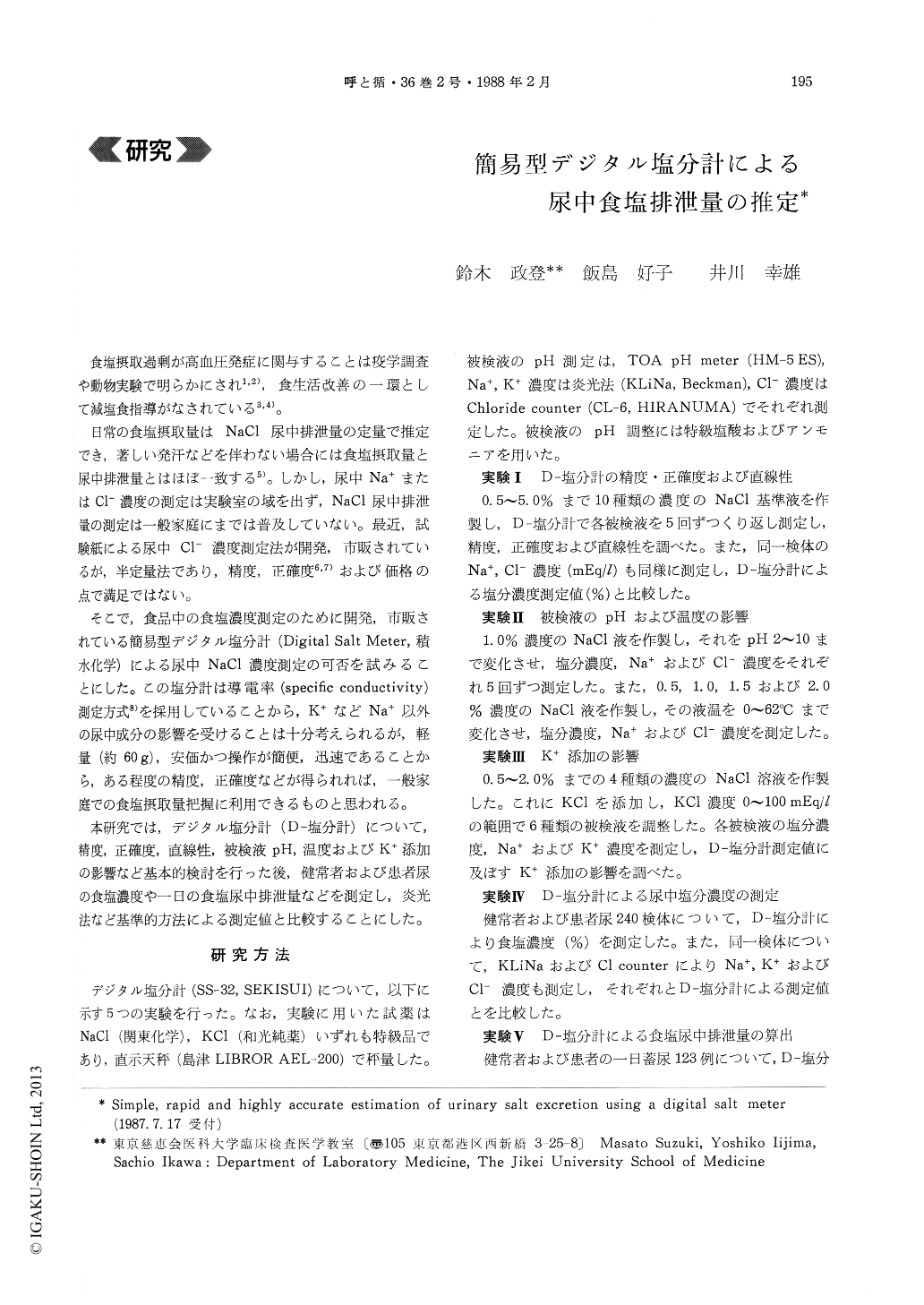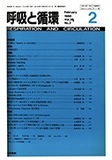Japanese
English
- 有料閲覧
- Abstract 文献概要
- 1ページ目 Look Inside
食塩摂取過剰が高血圧発症に関与することは疫学調査や動物実験で明らかにされ1,2),食生活改善の一環として減塩食指導がなされている3,4)。
日常の食塩摂取量はNaCl尿中排泄量の定量で推定でき,著しい発汗などを伴わない場合には食塩摂取量と尿中排泄量とはほぼ一致する5)。しかし,尿中Na+またはCl-濃度の測定は実験室の域を出ず,NaCl尿中排泄量の測定は一般家庭にまでは普及していない。最近,試験紙による尿中Cl-濃度測定法が開発,市販されているが,半定量法であり,精度,正確度6,7)および価格の点で満足ではない。
The aim of the present study was to attempt to estimate the amount of urinary salt excretion per day using a digital salt meter (SS-32 SEKISUI) designed for measuring the salt content of foodstuffs. Al-though the urinary K+ concentration influenced the readings of the digital salt meter, estimation of uri-nary salt excretion proved possible with high ac-curacy, by applying the following equation. By use of the digital salt meter, it was considered that urinary salt excretion could be estimated simply, quickly, and highly accurately at home.
Urinary salt excretion (g/day)=[108×reading of digital salt meter (%) -2.3]×urine volume (ml/day)×58.5×10-6

Copyright © 1988, Igaku-Shoin Ltd. All rights reserved.


